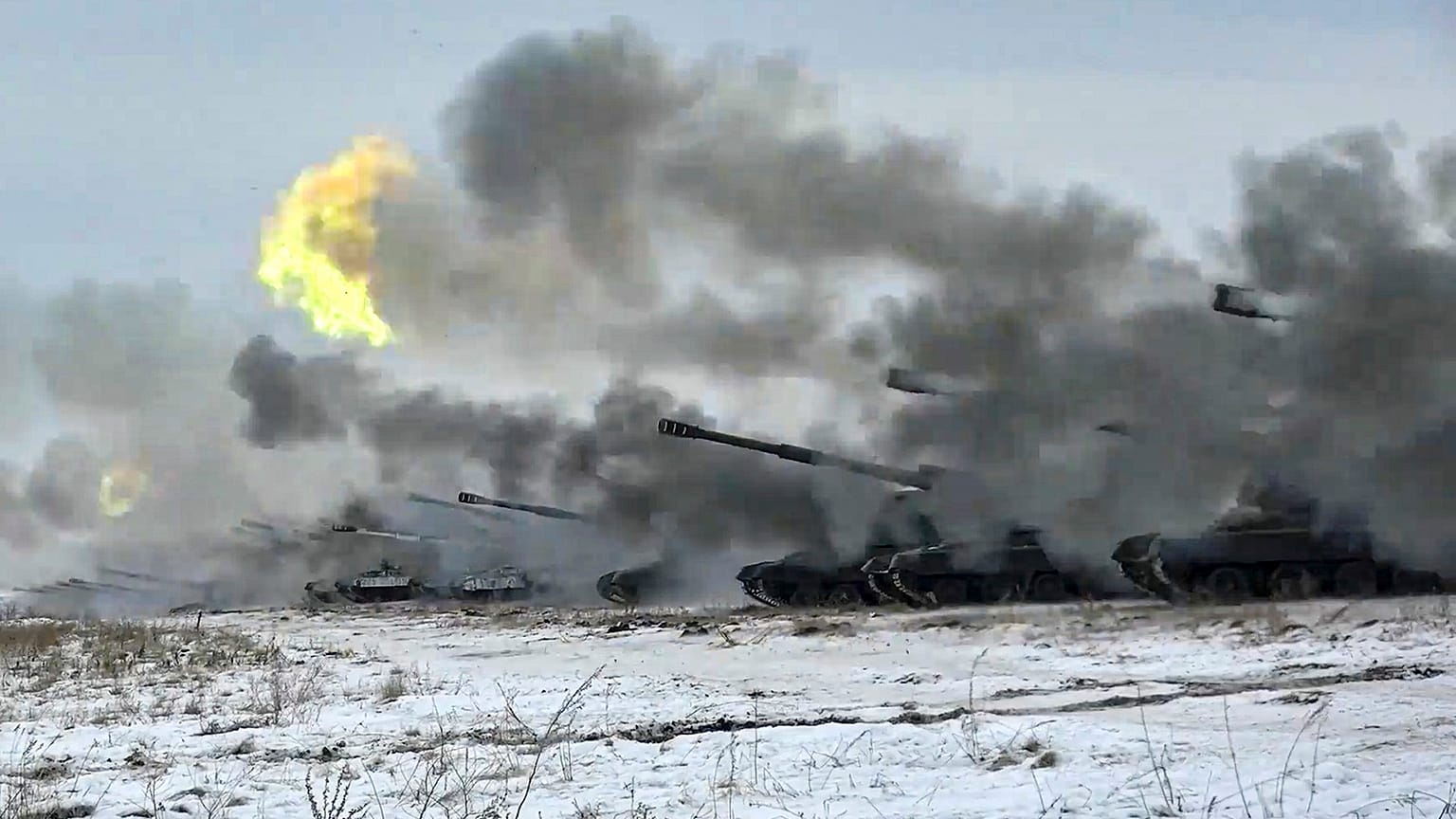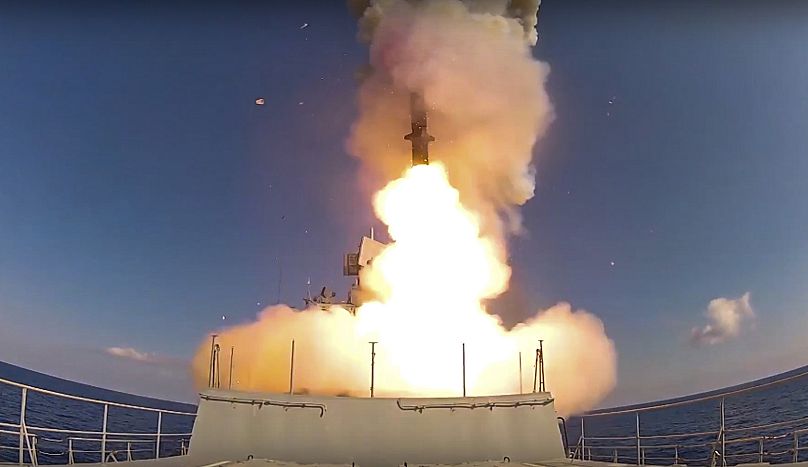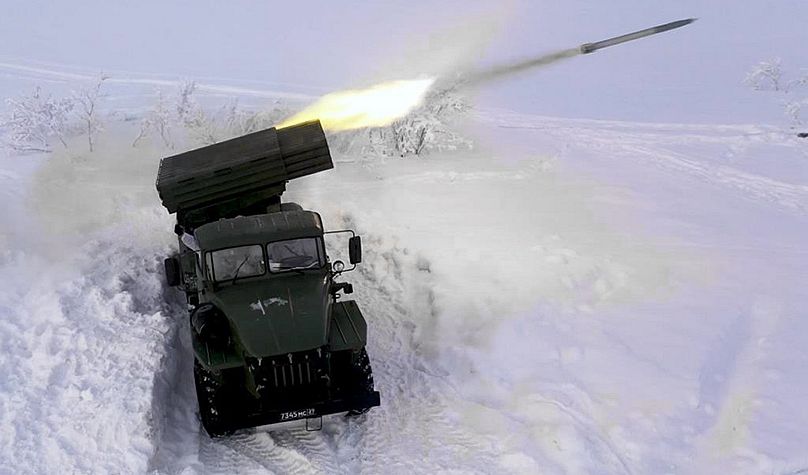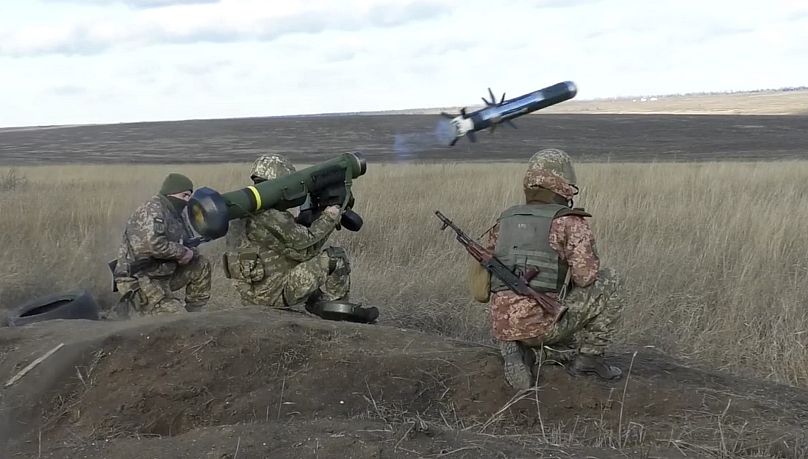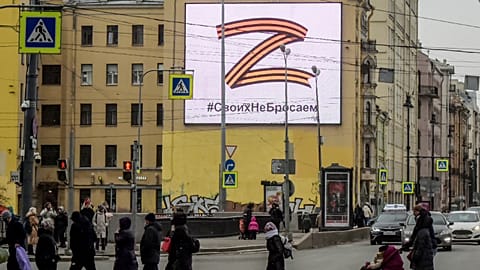The Ukrainian army is outgunned and outmanned in comparison to the Russian army. Here is some of the battlefield tech being used in the invasion.
The Russian invasion of Ukraine has fast become the largest conflict that Europe has seen since the Second World War, with Russia conducting a multi-pronged offensive across the country.
Using an array of weapons technology, the Russian military has pummeled wide areas in Ukraine with airstrikes and has conducted major rocket and artillery bombardments, resulting in large numbers of casualties.
On the eve of the war, the military forces of Russia and Ukraine were very imbalanced in the Russians' favour with vastly superior firepower and troops.
The West has begun providing new weapons to the Ukrainians though only time will tell just what difference this will make.
Here is a look at some of the weapons being used in the conflict.
Warplanes and missiles
The Russian military has used warplanes and Kalibr (Caliber) cruise missiles to hit facilities throughout Ukraine.
The Kalibr is a precision weapon, but Ukrainian military facilities and government buildings apparently targeted by those missiles in Kyiv and Kharkiv are located close to residential areas, resulting in civilian casualties.
The same applies to missiles carried by Russian warplanes, which targeted military infrastructure in strikes that also involved collateral damage.
To hit key targets, the Russian military also has used Iskander missiles that have a range of up to 500 km and carry a much more powerful warhead that can destroy big buildings and some fortified facilities.
Some Iskander missiles were reportedly fired from the territory of Russian ally Belarus, which has served as a staging ground for the Russian invasion.
Rockets and artillery
Ukrainian president Volodymyr Zelenskyy and other officials have accused the Russian military of indiscriminately shelling residential buildings, schools, and hospitals around the country.
Images from Ukraine's second-largest city of Kharkiv that were verified by the Associated Press showed what appeared to be a barrage of Russian rockets hitting residential buildings in an attack that killed and wounded scores of civilians.
The Soviet-designed Grad (Hail), Smerch (Tornado), and Uragan (Hurricane) multiple rocket launchers are designed to fire a salvo of powerful rockets to destroy concentrations of troops or military equipment.
Their use against populated areas inevitably causes heavy casualties and major damage to civilian infrastructure.
The Russian military also has a wide range of powerful Soviet-designed artillery units, which were bizarrely named after flowers, such as self-propelled 203-mm Peony and 152-mm Hyacinth and Acacia self-propelled Howitzers.
Moscow has claimed it was only targeting military bases and infrastructure, but the AP has documented massive damage to civilian infrastructure and residential areas in Kyiv, Kharkiv and numerous other cities and towns across Ukraine.
Russian officials have alleged that Ukrainian forces have widely deployed heavy weapons in residential areas to use civilians as shields, a claim that couldn't be independently verified.
Speaking at the Human Rights Council in Geneva last week, Michelle Bachelet, the UN's human rights chief, said "most civilian casualties were caused by the use of heavy artillery, multi-launch rocket systems, and airstrikes in populated areas, with concerning reports of use of cluster munitions striking civilian targets".
She didn't specify which side may have used them.
Cluster bombs and thermobaric weapons
Ukrainian officials have accused Russia of using cluster munitions, accusations the Kremlin has denied.
Such weapons are designed to target enemy troops and weapons over a broad area, and their use in populated areas inevitably would lead to mass casualties among civilians.
Cluster bombs, rockets, and artillery shells open in the air, releasing submunitions, or "bomblets," that are dispersed over a large area and simultaneously hit multiple targets.
Beyond the initial impact, bomblets have a high rate of failure to explode, posing a long-time threat of killing and maiming people for a long time after they were fired.
Thermobaric weapons consist of a fuel container and two separate explosive charges, with the first detonating to disperse the fuel particles and the second igniting the dispersed fuel and oxygen in the air, creating a blast wave of extreme pressure and heat that creates a partial vacuum in an enclosed space. That makes the weapon particularly deadly for people in an enclosed space.
The Pentagon has said that Russian mobile launchers for thermobaric weapons were spotted inside Ukraine, but couldn't confirm their use.
What's in Ukraine's arsenal?
The Ukrainian military has relied on the same assortment of Soviet-built multiple rocket launchers and howitzers that the Russian military has.
It doesn't possess sophisticated long-range precision weapons like Russia's Iskander ballistic missiles and Kalibr cruise missiles.
The Ukrainian military has Soviet-era Tochka-U short-range ballistic missiles, which have a powerful warhead but poor precision compared to the latest Russian weapons.
In addition to its aging Soviet-made arsenals, Ukraine has received large shipments of Western weapons, such as US-made Javelin anti-tank missiles and shoulder-launched Stinger anti-aircraft missiles.
Ukrainian officials said the country's military has used them to inflict heavy casualties on the invading Russian forces.
The Ukrainian military also has used Bayraktar drones supplied by Turkey before the conflict. It has released a video showing an attack by Bayraktar against a Russian military convoy.















